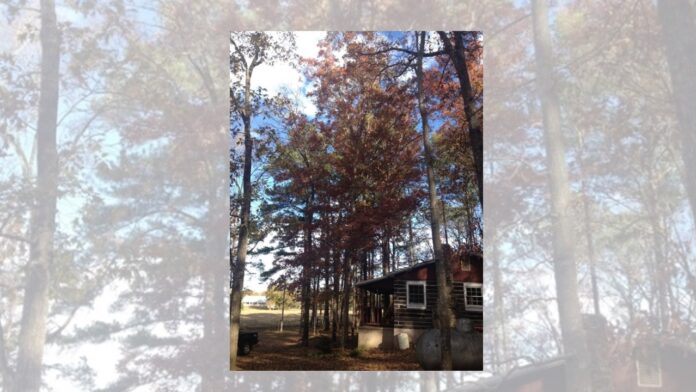Everyone is saying it: “This has been a crazy year.” The coronavirus has made its impact on human health and society around the world. While we are embroiled in the tempest of COVID, let me remind you of something that calmly happens every year like clockwork. Early this morning while feeding our little buddies (Buster and three cats) on the front porch, I heard it! With a PLINK, then that rolling sound, the first acorn of the 2020 fall season hit the ground at our Talladega home. This is a sound I know well, and sparks a joy in my soul. My wife and I have been living in our little mountain cabin for almost 14 years now. For the months of September, October and November, I will be hearing the plinking of oak acorns and hickory nuts on our metal roof.
Here at our Talladega cabin we have a whole host of oak trees. We have black, blackjack, cherrybark, chestnut (mountain), northern red, post, southern red, water, white and willow oaks. We also have mockernut, pignut and shagbark hickories along with a whole host of additional hardwoods. According to one of Extension’s publications, ANR-0581“Management of Hardwood Forests for Timber in Alabama,” we have around 200 different hardwood species in Alabama, including 25 oaks and eight hickories. Because Southern pines so dominate our timber industries, many people tend to overlook hardwoods until hunting season. However, based on U.S. Forest Service inventory research, hardwoods comprise the majority of Alabama’s standing timber biomass!
While trees produce their own food through photosynthesis, other creatures get their nutrition by eating trees. As one of my professors always said, “All green plants are food for someone else.” Our forest wildlife friends value these hardwoods for both food and shelter. For animals, most of the food value is found in the leaves and seeds. Leaves are eaten mainly by insects (caterpillars) that in turn are eaten by amphibians, birds, reptiles and mammals. Have you ever watched a bird hunting in the tops of trees? It is fascinating! I’ve even seen a rat snake hunting in the tree canopy for birds. While other snakes are relegated to the ground, a bush or leaning tree, the rat snake is truly a climber.
The seeds are eaten by both small and large alike. How many times have we walked through the woods, picked up seemingly good acorns or nuts, only to later find a worm in them? Yes, insects feed on the seeds, too! Most often when we in Alabama think of acorns and nuts, we think of deer, turkey and squirrels. Squirrels need large trees to survive. Squirrels live off seed sources from hickories, oaks and pines. For the last month and a half I have been finding “squirrel-chewed” green hickory nuts, and before that discarded “pine-cobs” littering the forest floor.
Deer and turkey are different from squirrels. They require a variety of habitats. They like both field and forest. In the summer deer and turkey are visiting the flowers, forbs, grasses and shrubs of power lines and pastures. During the fall, they head to the forests where acorns and nuts provide the needed fat in their diet to help see them through the lean days of winter.
Humans can also consume acorns, but they are not as tasty as our cultivated pecans. The meat inside the shell contains higher levels of tannic acid than what we are accustomed to. Indians used to collect acorns from white and chestnut oaks, along with American chestnuts, black walnut and wild pecan as a food source for the long winter months. As a side note, within the white oak family (oaks that produce white lumber) the acorns mature in one year, while those in the red oak family (pink lumber) take two years to produce mature acorns. Also, white oak family acorns tend to be larger than the red oak acorns.
Fall is my favorite season of the year. Cool Canadian air, leaves a changing on the hillsides and college football (maybe not this year), for me, it all begins with a single plink on my roof.
Blessings.
“Naturally Alabama” is written by Certified Forester Andrew J. Baril of the Alabama Cooperative Extension System (Alabama A&M University and Auburn University), an equal opportunity educator and employer. Everyone is welcome. Email questions to Andy at ajb0012@auburn.edu, or call 205-221-3392. Learn more about what is happening with the Extension by visiting the ACES website & social media: www.aces.edu, www.twitter.com/acesedu, www.facebook.com/alabamacooperativeextensionsystem.





























